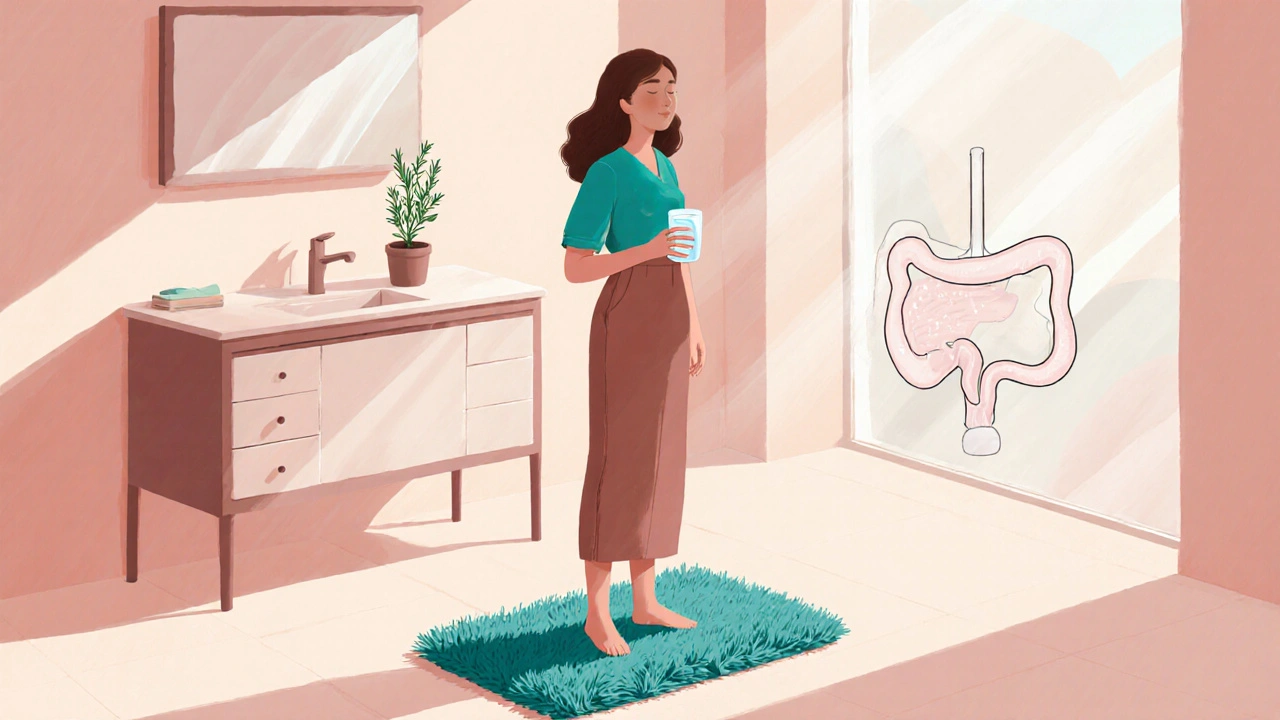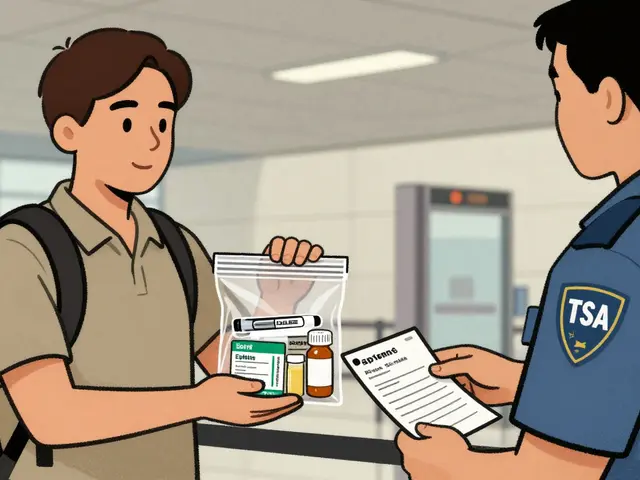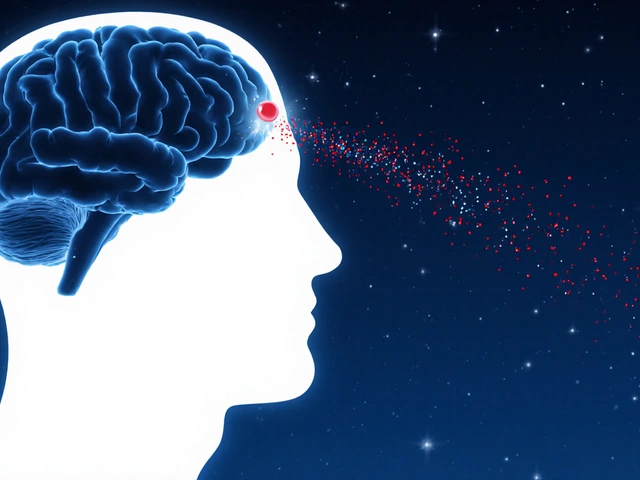Bladder Spasms Explained: Causes, Symptoms & Effective Treatments
Bladder spasm is a sudden, involuntary contraction of the detrusor muscle in the urinary bladder that often produces a sharp urge to urinate, pain, or leakage.
What Triggers a Bladder Spasm?
Understanding the root causes helps you spot patterns before they become a habit. The most common triggers fall into three buckets:
- Detrusor overactivity - when the bladder wall contracts too often or too strongly. This can be idiopathic (no clear reason) or secondary to another condition.
- Urinary tract infection (UTI) - bacteria irritate the lining, sending erratic signals to the muscle.
- Interstitial cystitis - a chronic bladder‑pain syndrome that makes the organ hypersensitive.
Other contributors include neurogenic bladder (nerve damage from diabetes, multiple sclerosis, or spinal injury), pelvic floor dysfunction, and lifestyle habits such as excess caffeine, alcohol or spicy foods.
Typical Symptoms of a Bladder Spasm
Symptoms vary by severity but usually involve one or more of the following:
- Sudden, strong urge to void that may not be satisfied after a trip to the toilet.
- Sharp, cramping pain in the lower abdomen or suprapubic region.
- Involuntary leakage (urge incontinence) during the spasm.
- Frequent bathroom trips - often more than eight times a day.
Because these signs overlap with other bladder disorders, a proper evaluation is essential.
How Doctors Diagnose a Bladder Spasm
The diagnostic pathway aims to rule out infection, stones, or tumors before labeling the problem as a spasm.
- Medical history and bladder diary - tracking fluid intake, voiding frequency, and pain episodes gives clinicians a clear pattern.
- Physical examination - a gentle pelvic exam checks for tenderness or muscle tightness.
- Urinalysis and culture - to detect a UTI that could be driving the spasms.
- Cystometry - a urodynamic test that measures bladder pressure during filling and empties, pinpointing detrusor overactivity.
- Cystoscopy (if needed) - a thin camera looks inside the bladder for inflammation, stones, or growths.
Most patients are diagnosed based on history + urinalysis; invasive tests are reserved for refractory cases.
First‑Line Lifestyle Strategies
Before reaching for medication, clinicians often suggest a handful of practical adjustments that target the underlying triggers.
- Bladder training - gradually lengthening the interval between bathroom trips, starting with the current average and adding 15‑minute increments.
- Limit bladder irritants: caffeine, carbonated drinks, artificial sweeteners, and acidic foods.
- Stay hydrated, but avoid “guzzling” large volumes in a short period.
- Practice pelvic floor relaxation techniques, such as diaphragmatic breathing or guided biofeedback.
These measures alone can cut spasm frequency by up to 40% in many patients, according to a 2023 urology cohort study.
Medication Options
If lifestyle tweaks don’t bring relief, pharmacologic therapy is the next step. The three main drug classes target the detrusor muscle in different ways.
| Medication class | Typical agents | Mechanism | Key side‑effects | Average onset (days) |
|---|---|---|---|---|
| Anticholinergics | Oxybutynin, Tolterodine | Block muscarinic receptors → reduces detrusor contractions | Dry mouth, constipation, blurred vision | 7‑10 |
| Beta‑3 agonists | Mirabegron | Stimulate beta‑3 receptors → relax bladder muscle | Elevated blood pressure, headache | 5‑7 |
| Alpha‑blockers (off‑label) | Tamsulosin | Relax smooth muscle at bladder neck | Dizziness, retrograde ejaculation | 10‑14 |
Choosing the right pill depends on age, co‑existing conditions, and how tolerant you are of side‑effects. For younger adults without cardiovascular risk, a beta‑3 agonist often feels smoother than an anticholinergic.

Procedural Interventions
When medication fails, urologists have a toolbox of minimally invasive procedures.
- Botox injections - botulinum toxin reduces detrusor overactivity for up to six months.
- Sacral neuromodulation - a tiny pulse generator implanted near the sacral nerve modulates bladder signaling.
- Peripheral nerve blocks - temporary anesthetic injections can break a pain‑spasm cycle.
These options are typically reserved for patients whose quality‑of‑life remains poor after 6‑12 weeks of optimal medication.
Special Populations
Certain groups experience bladder spasms more frequently:
- Women post‑childbirth - pelvic floor stretching and hormonal shifts increase spasm risk.
- Elderly men with benign prostatic hyperplasia (BPH) - an enlarged prostate can cause urinary retention, triggering detrusor overactivity.
- People with neurological disorders - multiple sclerosis, Parkinson’s disease, and spinal cord injury often lead to a neurogenic bladder that manifests as spasms.
Management in these groups may need a multidisciplinary approach involving physiotherapists, neurologists and continence nurses.
When to Seek Professional Help
If you notice any of the following, book an appointment promptly:
- Blood in urine or a sudden change in urine colour.
- Pain that wakes you at night or interferes with sleep.
- Incontinence that disrupts work, school or social activities.
- Symptoms persisting despite at‑home measures for more than three weeks.
Early evaluation cuts the risk of complications such as chronic kidney damage due to high bladder pressures.
Putting It All Together: A Practical Action Plan
- Track your pattern - use a simple notebook or smartphone app for a week.
- Note fluid type, volume, time, urgency level, and any pain.
- Trim irritants - replace coffee with tea, limit soda, and avoid spicy meals after 6p.m.
- Start bladder training - set a timer for your current voiding interval; gradually add 15minutes each week.
- Consult your GP - share your diary; request urinalysis and discuss whether an anticholinergic or beta‑3 agonist is suitable.
- Review after 4weeks - if symptoms improve <50%, consider referral for urodynamic testing.
- Explore advanced options - if meds don’t help, ask about Botox or sacral neuromodulation.
Following this roadmap gives most people noticeable relief within two months, according to a 2024 national health survey.
Frequently Asked Questions
Are bladder spasms the same as an overactive bladder?
A bladder spasm is a single, sudden contraction of the detrusor muscle, while overactive bladder (OAB) describes a chronic pattern of urgency, frequency and sometimes incontinence. Frequent spasms are a common cause of OAB, but not every OAB patient experiences noticeable spasms.
Can dehydration cause bladder spasms?
Mild dehydration can concentrate urine, making it more irritating to the bladder lining, which may trigger spasms. However, the biggest risk is drinking too much fluid in a short burst, which overfills the bladder and forces it to contract abruptly.
Is it safe to take an anticholinergic if I’m already on blood pressure meds?
Generally yes, but physicians watch for additive dry‑mouth and constipation, which can affect blood pressure control indirectly. Always discuss all current prescriptions with your doctor before adding a new bladder‑spasm drug.
How long does Botox relief usually last?
A single Botox injection into the detrusor muscle typically provides symptom control for 4‑6months. Repeat injections are safe and commonly scheduled once the effect wanes.
Can pelvic floor physical therapy stop bladder spasms?
Physical therapy that focuses on relaxing the pelvic floor can reduce reflex spasms in up to 30% of patients, especially when the spasms stem from muscle tension rather than pure detrusor overactivity.






13 Comments
Katherine M
September 27 2025In contemplating the nuanced interplay between detrusor overactivity and external irritants, one perceives a microcosm of bodily self‑regulation. The article delineates the pathophysiology with commendable clarity, yet it would benefit from a deeper sociocultural perspective on fluid intake habits. Moreover, the integration of bladder diaries as a reflective practice aligns with the age‑old philosophical maxim to "know thyself". 😊
Bernard Leach
October 6 2025When looking at bladder spasms the nervous system and muscle fibers form a feedback loop. Overactive detrusor signals cause sudden contractions. The urge to void can appear without a full bladder volume. This mechanism is amplified by irritants such as caffeine or infection. Lifestyle modifications aim to break this loop. Tracking fluid intake provides data for pattern recognition. A bladder diary can reveal hidden triggers over days. Medical evaluation should begin with urinalysis to exclude infection. Cystometry offers objective measurement of pressure changes. Pharmacologic options target the muscarinic receptors or beta‑3 pathways. Anticholinergics reduce muscle activity but carry dry mouth side effects. Beta‑3 agonists relax the bladder muscle with fewer anticholinergic complaints. In refractory cases Botox injections can provide temporary relief. Sacral neuromodulation works by altering nerve signals to the bladder. Ultimately a personalized plan yields the best quality of life.
Mark Eaton
October 15 2025Bladder training really changed my routine.
Alfred Benton
October 23 2025It is evident that the pharmaceutical industry capitalizes on the prevalence of detrusor overactivity to market ubiquitous anticholinergic agents, often obscuring the long‑term sequelae. While clinicians prescribe these medications with clinical intent, the broader sociopolitical implications warrant scrutiny. One must consider the ethical dimensions of such therapeutic monopolies.
Susan Cobb
November 1 2025The notion that bladder training alone can curb spasms seems overly optimistic and neglects the complex neuro‑immune interactions at play. Recent literature suggests that micro‑inflammation of the urothelium contributes significantly to detrusor hyperactivity, a facet often omitted in popular guides. Moreover, the emphasis on caffeine reduction disregards the adaptive capacity of renal clearance mechanisms. A more nuanced approach would integrate pelvic floor physiotherapy alongside targeted anti‑inflammatory diets. Thus, the presented hierarchy of interventions appears reductive.
Ivy Himnika
November 10 2025While I appreciate the depth of the analysis, it is essential to acknowledge that practical lifestyle adjustments have demonstrated measurable benefits in randomized cohorts. The incorporation of structured pelvic floor relaxation, as highlighted, aligns with evidence‑based protocols. 😊
Nicole Tillman
November 18 2025I concur with the emphasis on evidence‑based practices, yet I would stress the importance of patient empowerment through self‑monitoring tools. By fostering autonomy, clinicians can enhance adherence to both behavioral and pharmacologic regimens. This collaborative dynamic ultimately mitigates the burden of chronic bladder spasms.
Sue Holten
November 27 2025Oh great, another bedtime story about bladder drama – because who doesn’t love a surprise urge at 3 AM? 🙄
Tammie Foote
December 6 2025Honestly, the urgency can be a real nuisance, especially when you’re in the middle of a Netflix binge. Just remember to hydrate wisely and maybe keep a spare blanket handy for those midnight trips.
Jason Ring
December 14 2025i read the post and think its pretty solid but kinda dense. i guess if u wanna try the bladder diary thing it could help clear up patterns. also, u might want to cut back on soda; it does mess with urination sometimes.
Kelly Hale
December 23 2025Behold! The simple act of noting one’s liquid intakes transforms from a mundane task into a heroic quest against the tyranny of uncontrolled detrusor contractions. With each scribbled entry, the wielder of the pen gains dominion over the insidious urges that threaten to upend nightly repose. This saga, though seemingly trivial, epitomizes the struggle of the modern individual confronting a rebellious organ. Let us therefore champion the bladder diary as the unsung champion in the battle for urinary sovereignty.
Neviah Abrahams
January 1 2026the truth is the medical community hides how messy these spasms really are they just push pills and hope you forget the pain while they line their pockets we deserve a real answer not just another prescription
felix rochas
January 9 2026Indeed-one must question the very foundations of our healthcare system; it is rife with conflicts of interest; the over‑reliance on pharmacotherapy is nothing short of a systematic ploy; patients are reduced to statistics, and their lived experiences are dismissed; let us demand transparency, accountability, and evidence‑based alternatives!